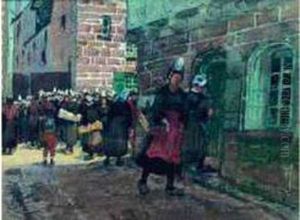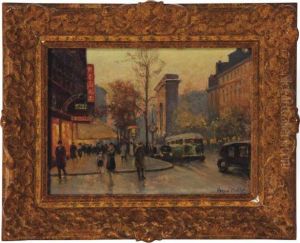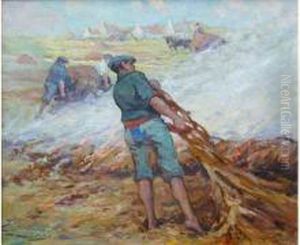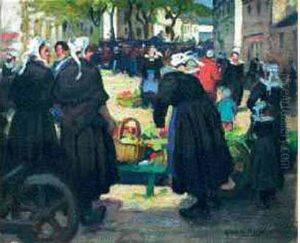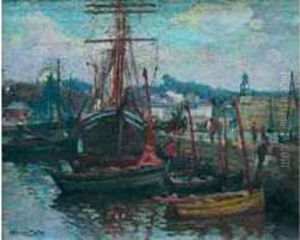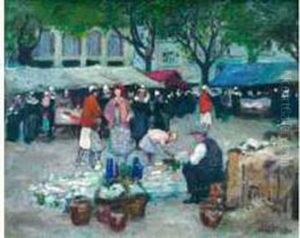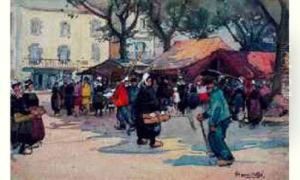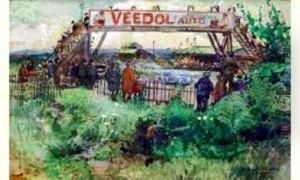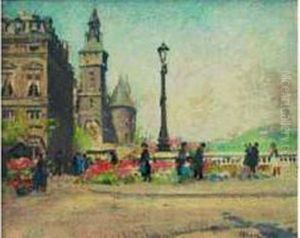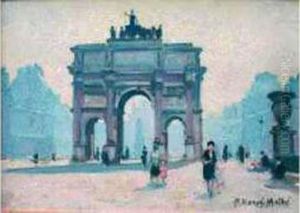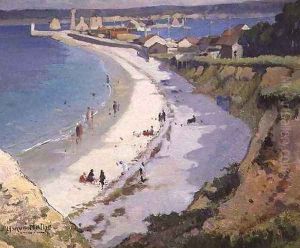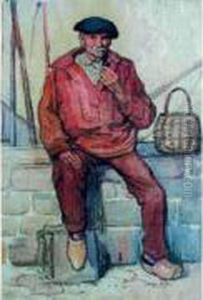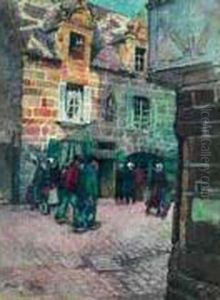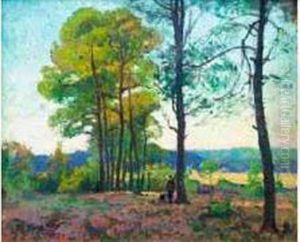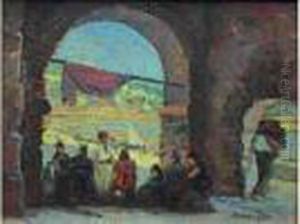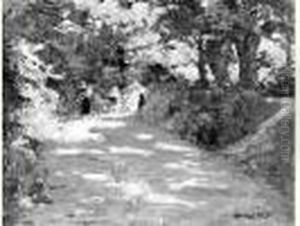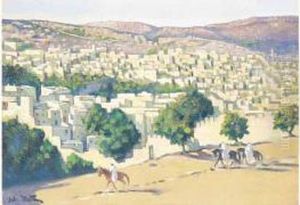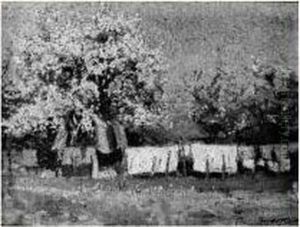Jules Alfred Herve-Mathe Paintings
Jules Alfred Herve-Mathe, commonly known as Jules Hervé-Mathe, was a French painter who was born in Langres, France, in 1868. He is known for his landscapes, marine scenes, and urban vistas, which often captured the spirit of the Belle Époque era in France. Hervé-Mathe's style can be characterized by its harmonious color palette and the delicate interplay of light and shadow, which shows the influence of the Impressionist movement, although he is often associated with the Post-Impressionist period due to the timeframe of his work.
Hervé-Mathe received his formal art education in Paris, where he studied under various established artists of his time. His work began to gain recognition at the turn of the century, and he exhibited at the Salon des Artistes Français, where he was awarded a silver medal in 1901, and gold medals in both 1911 and 1913. He also received the Légion d'honneur, France's highest order of merit, for his contributions to the arts.
Throughout his career, Hervé-Mathe's work was celebrated for its contribution to French landscape painting. He captured the essence of French towns and rural settings, along with Parisian scenes and the French Riviera. His work is often noted for its optimistic portrayal of life, with bustling street scenes, serene landscapes, and luminous seascapes that evoke a sense of calm and beauty.
Despite the turmoil of the early 20th century, including World War I, Hervé-Mathe continued to paint and exhibit his work. His paintings were collected by art lovers and found their way into private collections and museums around the world.
Jules Alfred Herve-Mathe passed away in 1953, leaving behind a legacy of art that remains appreciated for its charm and historical depiction of France during a period of great cultural richness and transformation. His paintings continue to be studied and displayed as examples of French art from the late 19th and early 20th centuries.
